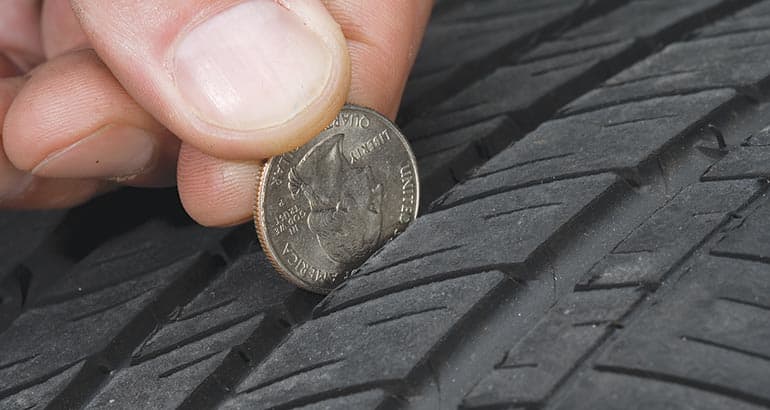1. Air Pressure
Visiting friends or relatives who live far away, requires quite a bit of packing as well as long-continuous drives. Amongst those things, taking a thorough look at the car to check for any leakages and minor issues is very important. Similarly, the standards of protocol demands that you also check the air pressure. Even if you are not going for a long drive, it is suggested that the tire pressures be checked and maintained regularly. Air pressure being too low or high, can affect a tire’s life and health. Incase if the tire becomes underinflated, it will result it in expanding, build up heat, ultimately resulting in failure. Under-inflated tires also negatively affect a vehicle’s economy.
2. Tread Health
People, especially during holidays, prefer taking their families to areas where there is natural beauty. Such locations may have muddy and wet terrains with slippery roads etc. In such cases, you will need to check the depth of your tread to see how much is it left. You cannot overlook this fact and take your chances, especially if the tires need to be changed and you are driving at highways. Your thorough observation will also let you know about uneven tire wear. It will further lead you to become aware of any misalignment, camber and improper inflation issues.
3. Tire Sidewalls
Tires with time, encounter curbs, gravel, potholes and anything else which may affect its life. Such things can damage the sidewalls without you even noticing. If you notice that there’s something unusual on your tire’s sidewall, such as a cut or a bulge, it means that there is something wrong with the tire.
4. Tire Age
When purchasing a tire, it is equally important to also check its age at the same time. Every tire has a date of its age mentioned on it. This date is basically the manufacturing date of the tire. It can be found on the outer side wall of the tire. For instance, if the code says 2014, it means that the tire has been manufactured in the 20th week of 2014. Some tire manufacturers recommend, that you replace your tires after six years even if they haven’t worn out. It is by law, necessary for tire manufacturers to mention the date on either inside or outside tire wall. Therefore, it is necessary to check if you find something fishy.

5. Used Tires
Buying used tires may save you a few bucks but at a great risk. You may have thought that buying used tire models have gotten you a pretty good deal. But you cannot be mistaken about that beyond a point, especially when you are an amateur in identifying and observing a tire’s physical condition. At first glance, used tires may provoke you, but you never know if they have been overloaded or underinflated while they were being used. If you are purchasing a used car, ask the seller to provide you with service history. If you observe that the car has been neglected, chances are that the tires have been as well.
If you’re buying new tires or used tires, make sure to buy tire models that your car need. Wrong tire models will make things difficult for you.


